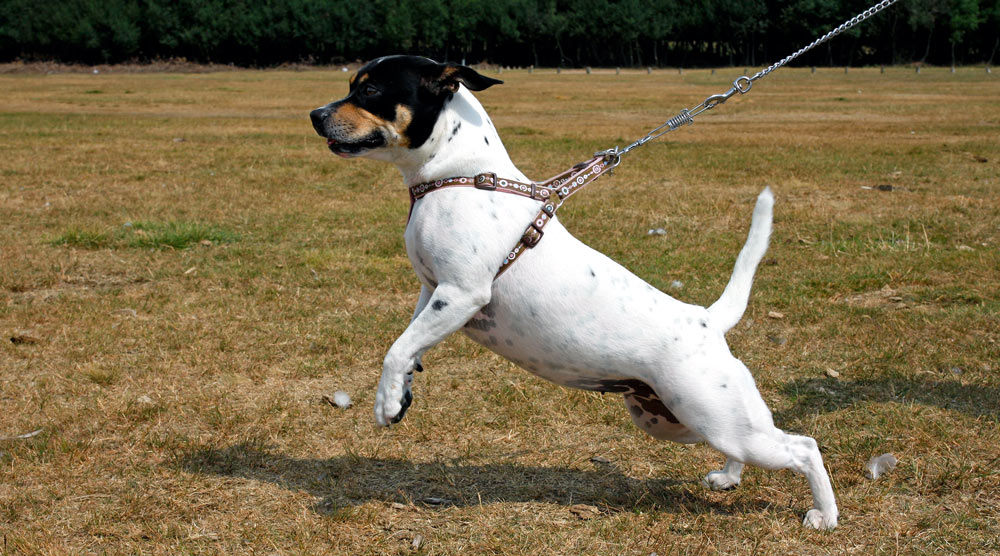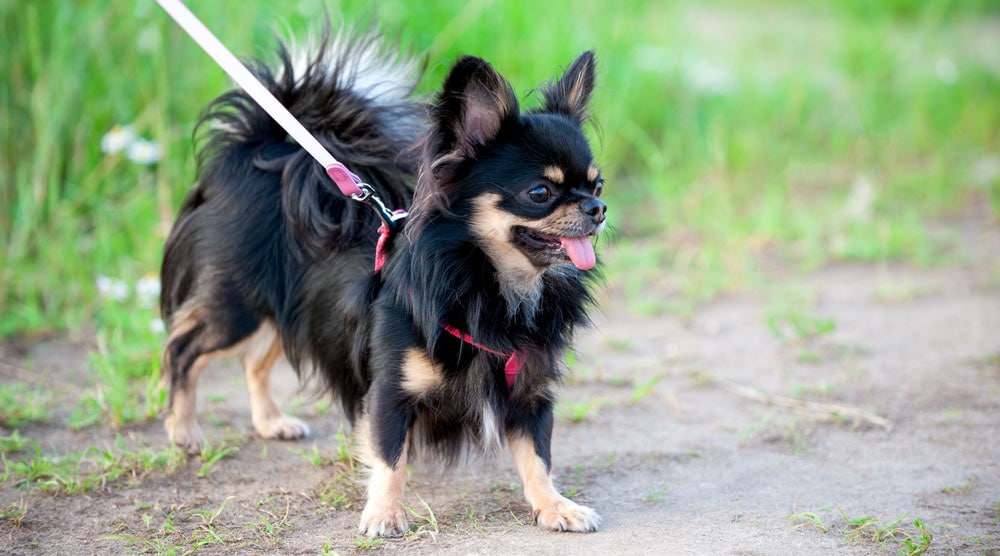Struggling to choose a harness for your dog? You’re in the right place! In this article, we discuss the pros and cons of the various types of dog harness.
Contents
With hundreds of dog harnesses on the market, however, how do you choose the right option for your dog?
The first step is to understand the differences between the various types. Here’s an overview of the most common types, including the pros and cons of each.
4 Types of Dog Harness
Back-Clip Dog Harnesses
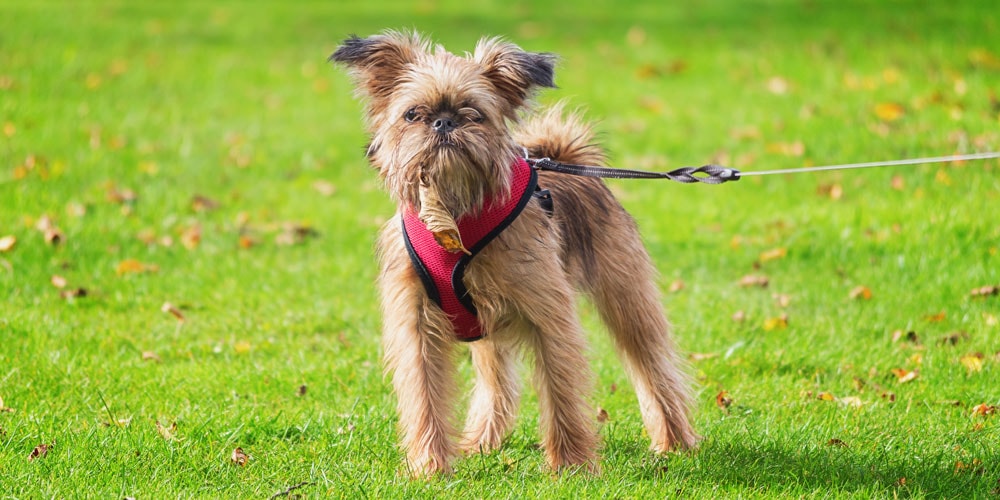
As the name suggests, back-clip harnesses have a D-Ring attachment on the dog’s back.
This configuration is probably the most common, as it’s easy to use and comfortable for most dogs. The rear attachment places the leash far away from the trachea, so they are useful for small dogs with delicate throats.
A downside is that back-clips provide less control and don’t discourage pulling. So, if your pet has a habit of lunging or prefers to take you for a walk, one of the other types may be a better option.
Pros:
- Leash is less likely to get tangled around the dog’s legs
- Attachment is located on the back rather than near the throat
- More control than a collar as there is less risk of choking
Cons:
- Doesn’t prevent pulling or lunging
- Doesn’t provide directional correction (such as front-clip harnesses)
Front-Clip Dog Harnesses
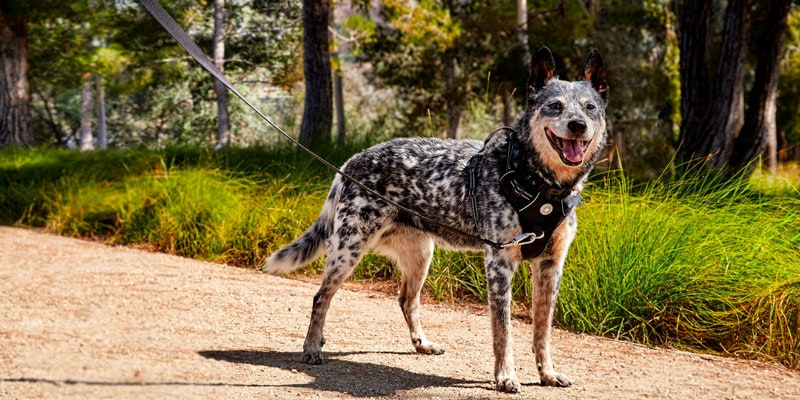
Front-clip harnesses are less common, but have several advantages – especially for dogs that pull.
The position of the leash attachment makes it harder for a dog to pull where they want to go. The tension pulls the dog towards the owner rather than forward, while also providing more control.
This is why front-clip harnesses are often favoured by professional trainers or people with large dogs.
A downside is the leash is much more likely to get tangled around a dog’s legs when attached to the front of the harness. Some dogs also find this type of harness less comfortable on a walk.
It’s also important to note that front-clip harnesses must be properly fitted. Failure to do so could affect your dog’s gait, which may lead to pain or injury.
Pros:
- Greater control over your pet
- Discourages pulling without causing pain or discomfort
Cons:
- The leash is more likely to get tangled around the dog’s leg
- The design won’t prevent an aggressive or highly reactive dog from pulling
- Poor fitting could lead to undue stress on the front legs
Dual-Clip Dog Harnesses
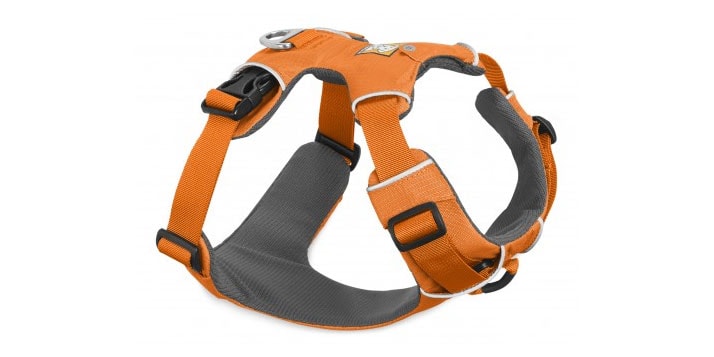
A dual-clip harness provides the best of both front and rear-clip options. While the rear-clip is often the “dominant” attachment for guiding on a walk, the front-clip kicks in when the dog starts to pull or lunge. This combination offers better control than either attachment on its own.
There are some drawbacks to a dual-clip though. Most have a webbed design, so they are more likely to chafe around the shoulders. Dual attachment harnesses are also often more expensive, so they are only worth buying if you need extra control.
Pros:
- The combination of front and rear-clip attachments provide excellent control
- Can discourage pulling while also providing gentle guiding via the back clip
Cons:
- Webbed design may chafe
- More expensive than other options
Note: You can also buy harnesses with more than two attachment points. These are less convenient, but provide greater control.
What About Head Halters for Dogs?
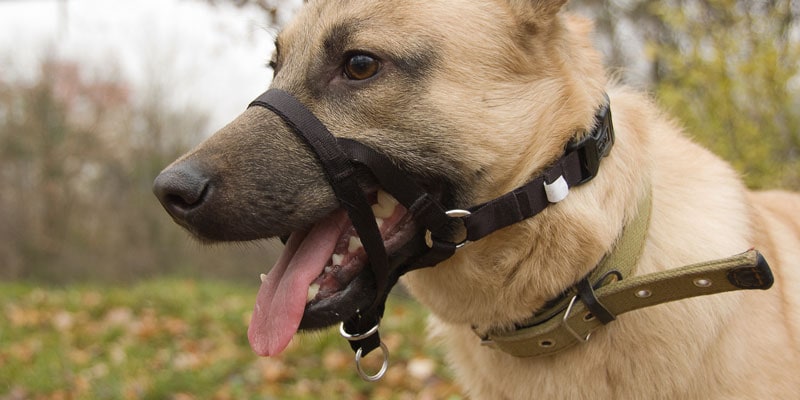
Head halters are really a type of collar, rather than a harness. They are typically used for dogs who are strong pullers or reactive on a leash. These harnesses – which are often known by brand names such as Gentle Leader and Halti – may look like a muzzle, but are actually a tool for walking a powerful dog.
Most head halters have a strap around the neck and another across the snout. The leash attachment is via a D-Ring under the chin. When the dog pulls, the halter causes the dog’s nose to move down and towards the owner, so it’s almost impossible to pull in a straight line.
I don’t recommend using a head halter unless your dog is aggressive or highly reactive though. While they might not be painful in the same way as a choke chain or prong collar, halters are still an aversive training tool that makes a walk unenjoyable for the dog. Putting so much force through the sensitive nose area is always going to cause discomfort, and can be dangerous in some situations.
For leash pulling, spend time using positive reinforcement and desensitisation methods instead. This actually teaches your dog not to pull, rather than relying on an aversive management tool.
Even when used for highly reactive dogs, halter collars should only be a temporary tool while you seek help from a qualified canine behaviorist. You should also use a dual leash, with one clip attached to a regular harness and the other to the halter. When walking, make sure there’s no tension on the halter, and only use it to change your dog’s direction in an emergency.
Be prepared for your dog to react when you first try the halter. Many dogs will attempt to remove it with a paw or rubbing his head against the floor. You’ll need to use positive reinforcement techniques to desensitize your pet to the halter before putting it on.
It’s important to never yank or pull a halter. This can cause pain and injury to your dog’s neck. You also shouldn’t use a halter with a retractable leash, as if your dog comes to an abrupt stop it could cause injury.
What About Step-In Harnesses?
Instead of being a type of harness, “step-in” refers to the fitting style. A step-in harness can have front, back or both attachments.
These harnesses require your dog to put his feet through two holes, rather than passing something over his head. While this might be difficult for over-excited dogs, most canines prefer a step-in harness. For more information, check out my guide here: https://www.thedogclinic.com/step-in-harness-guide
A Word About Dangerous Harnesses, Leashes & Collars
The harnesses above are all designed to avoid causing pain. Unfortunately, there are other types that use pain or negative sensations in an attempt to control a dog. Some of the most common include:
- Prong collars
- Citronella spray collars
- Shock / electric collars (sometimes called e-collars)
- Choke / check chains
As you might expect, I don’t recommend ever using negative tools. They might work some of the time, but only because they hurt your dog. Choke and prong collars can also cause serious damage to a dog’s trachea.
Aside the ethics of these collars, there’s evidence to suggest they might actually cause behavioural issues. This isn’t surprising, as a stressed dog is much more likely to act aggressively or shut down.
And if a sales person ever tells you that shock collars “don’t really hurt” or that a prong collar is fine if it has rubber tips, don’t believe them!
Summary
There are a variety of harness types available – and the right choice depends on your dog’s temperament and behaviour.
If you have a small dog who is usually calm on the lead, a rear-clip harness is a great choice. For dogs that occasionally pull, a front-clip or dual-clip could be a better option, as this provides greater control.
I hope this article has helped you decide on the best type of harness for your dog. If you have any questions, please use the comments form below.



